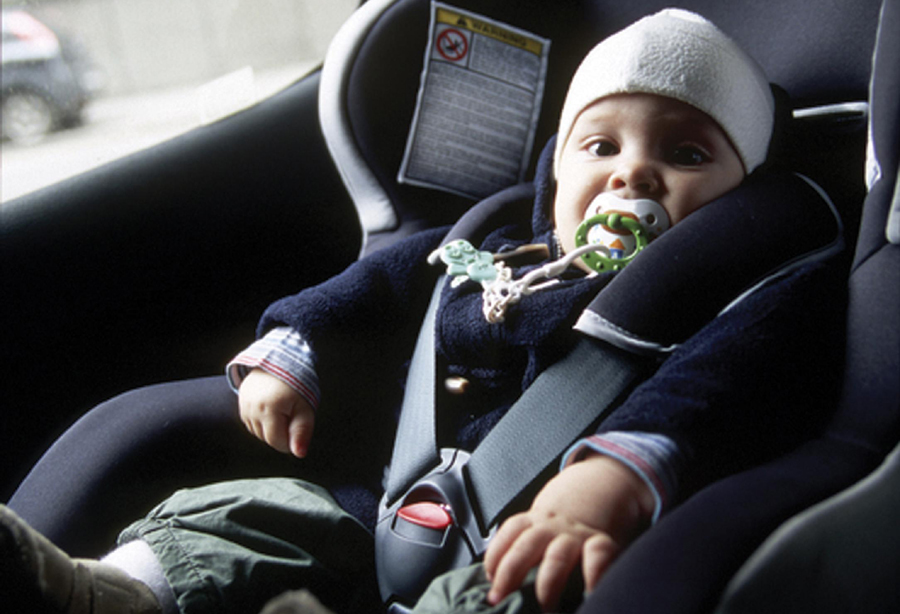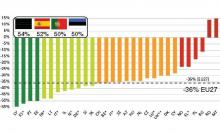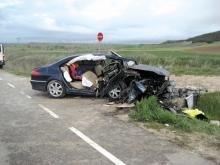
An the past 10 years, half a million people have been killed on
The average road deaths per million population across the EU15 nations is 65 while the average for the EU27 nations this figure is 79, reflecting the high accident rates in the Eastern European countries in particular.
As Spain launches into its European Union presidency, the ETSC (
This comes at a time when many European countries are reporting improvements in safety figures as they try to reach the European road safety target of halving the number of road deaths in 2010 compared to 2001 figures. In the 2001-2008 period the number of road deaths fell by an average of 28% across the EU. In the EU15 nations, the rate of road deaths was reduced by an average of 37% during this period.
Spain has seen a rapid improvement in road safety over the past years, and will preside over the EU during a crucial six months with the implementation of the new Lisbon Treaty and the preparation of the new EU Road Safety Policy for the next decade.
Indeed, the ETSC congratulated Spain for being among the best performers in reducing the number of deaths since 2001. With a 44% reduction between 2001 and 2008 Spain is close on the heels of the top three; Luxembourg, France and Portugal, although despite increased preventive measures, Luxembourg has reported a rising number of traffic deaths for the first time since 2000.
The ETSC presented Spain with the 2009 Road Safety PIN Award for its efforts, an honour which went to Portugal in 2008. That country plays host to the 16th
The ETSC, which "welcomes the news that road safety will be a priority under land transport during the Spanish Presidency of the EU", is urging the European Commission to adopt a new reduction target and a new strategy for its 4th Road Safety Action Programme (RSAP) 2011- 2020 soon, and that the Spanish Presidency supports this fully. In concrete terms, ETSC proposes to adopt a shared target of 40% reduction of deaths and serious injuries in each Member State, and a separate target of 60% reduction of child deaths between 2011-2020.
Alongside the main behavioural causes of death and injuries (speeding, drink driving, nonuse of seat belts and child safety restraints, badly designed infrastructure and vehicles), the programme should tackle new emerging trends such as the increasing numbers of motorcyclists and older people among those killed or injured on the roads.
ETSC says that given that in Europe 60% of all fatal work-related accidents are road collisions (Eurogip 2004), the programme should also ensure that employers (both companies and public administrations) include road safety in their management parameters when managing their fleets and transport operations.
This means preparing road safety plans by every employer and encouraging them to purchase vehicles with in-vehicle safety technologies.
The proposal on Cross Border Enforcement of road safety law is currently being redrafted and ETSC is urging Spain as a country with both transit traffic and with a lot of tourist traffic to prioritise this important dossier. ETSC would also like to see that it is extended to include enforcement best practices in the areas of speeding, drug and drink-driving and seat belt use so as to encourage all EU Member States to consider improving their quality of enforcement.
Antonio Avenoso, executive director of ETSC, said: "Even if it is unlikely that the EU as a whole reaches its 2010 target, many countries have made significant, and in some case outstanding progress over the past decade. It falls upon Spain, the fourth best performer in terms of road death reduction in the EU, which managed to reduce road deaths by 44% in 2001-2008, to keep up this momentum into the next decade."
Serious Injuries
According to official data, at least 300,000 people are seriously injured on EU roads every year and the ETSC is highlighting that the EU needs to tackle the problem by adopting reduction targets for serious injuries.While more protective vehicles and roads, better emergency response and medical progress, help prevent road deaths, survivors remain and many are seriously injured. The ETSC is calling for European and national decision-makers to tackle this issue, as previous safety moves have focussed solely on reducing fatality rates.
It points out that in addition to the 39,000 people killed in road collisions in the European Union each year, about 1.7 million people are recorded as injured in police reports. Of these casualties, 300,000 are injured seriously and for every road death in the EU, at least 44 road injuries are recorded, of which eight are serious.
Road design: 'a key factor'
THE UK'S CAMPAIGN for Safe Road Design believes that effective safety measures can cut the cost of road crashes by €50 billion a year. The European Road Assessment Programme,
Euro
MEPs have been asked to sign a pledge to support the Campaign and make safe road design a key element in Europe's new Road Safety Action Plan. Dr Joanne Hill, head of the Campaign, said: "A safe road needs road users who obey traffic law; manufacturers who provide safe vehicles, and authorities who provide safe roads."
She claims the way risk on Europe's roads is managed "would not be accepted in any other field such as air, rail or factory safety and is a quarter of a century out of date. We need to move from just treating blackspots where some have already died to systematically removing the known high risks that will lead to hundreds of thousands being killed or seriously injured in the decade ahead."
Hill added: "Now, as Europe prepares a new Road Safety Action Plan for the decade ahead, there is an urgent need for public policymakers to understand the new EuroRAP mapping and how we can cut road casualties through affordable safety engineering on high-risk roads."
Some good figures, but there is still more to be done
RECENT FIGURES from a number of European countries show that more has yet to be done to reduce the number of road accidents and fatalities. In 2009, a total of 355 people died in car accidents in Sweden (42 fewer than in 2008) making the country the second safest in the world for traffic.
According to analysts for the Swedish Road Administration (Vägverket), the drop in road-related fatalities is linked to the recession with fewer inexperienced drivers taking tests, and fewer trucks have been on the roads. The safety improvement is also thought to stem from the recent installation of central line safety barriers on major routes.
However, in the Czech Republic, anomalies in accident reporting levels have brought the country's vehicle crash statistics into question. The Czech police and insurance companies have reported different figures for a number of traffic accidents in 2009. While the police registered 75,000 accidents, down from 160,264 in 2008, insurance companies recorded 170,000 claims, an increase of 2%.
The discrepancy is caused by a change in law that allow drivers not to report the accident to the police if the damage is less than €3,820.31. This also allows the drivers to avoid alcohol tests. The official figures say that the number of accidents caused by drink-driving fell by 1,600 although the number of drink drivers caught by the police rose by 5,000.
Luxembourg, despite increased preventive measures, has reported a rising number of traffic deaths for the first time since 2000. In 2008, 35 people died in 34 accidents, whereas 49 people died in 45 accidents in 2009. However, the number of seriously injured persons has increased continuously since 2000.
Finland's Central Organisation for Traffic Safety, (








